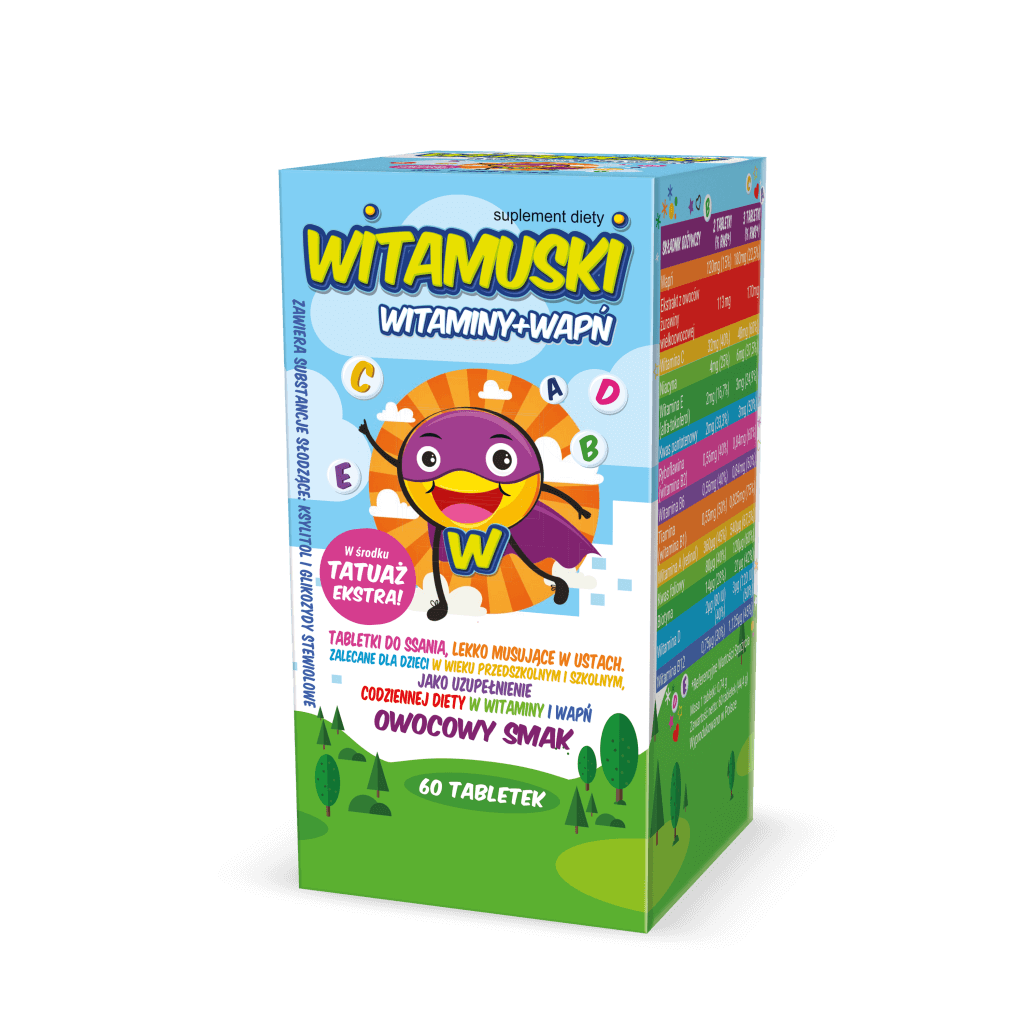Nutrition plays a special role from an early age. A properly balanced diet provides all the necessary nutrients, ensuring the harmonious growth and development of the young organism. Nutritional education for children is a long-term process that involves the transfer of knowledge in the field of nutrition. Eating habits and taste preferences developed in childhood are reflected in later age, so it is worth taking care of proper nutritional education and starting it from an early age of a child.
Proper nutrition of children
A child’s diet should be varied and provide an adequate supply of nutrients from different product groups. Children should eat 4-5 meals a day (main meals: breakfast, lunch, dinner and complementary meals: second breakfast and afternoon tea) at intervals of 3-4 hours.
The menu should include mainly cereal products, especially whole grains (flour and wholemeal bread, graham, buckwheat, barley, whole grain pasta, brown rice, oat flakes and rye). Cereal products are the main source of energy in the diet as well as dietary fiber, B vitamins and minerals (magnesium, zinc, iron), which are responsible for the growth and development of the young organism. Thiamin (vitamin B1), riboflavin (vitamin B2) or niacin (vitamin B3) support the proper functioning of the nervous system. Magnesium helps in maintaining healthy bones and, together with iron, contributes to the reduction of tiredness and fatigue. Zinc is responsible for supporting the maintenance of correct vision.
In the child’s diet, we should take care of colorful vegetables and fruits, which are not only an important source of dietary fiber, but also many vitamins (B2, B6, C, K, beta-carotene, folates), minerals (potassium, magnesium) and health-promoting substances. bioactive (e.g. polyphenols, flavonoids, phytosterols). The health-promoting properties of bioactive ingredients are well known, including their antioxidant, anti-inflammatory, anti-diabetic and anti-allergic properties. The most valuable compounds can be found, for example, in apricots, parsley, berries, cabbage or legumes.
According to the recommendations, children should consume 5 servings of vegetables and fruit daily in various forms: raw, cooked, baked or as fruit mousses (a serving is 80-100 g of vegetables or fruit). One of the recommended servings can be replaced by a glass of sugar-free juice (200 ml).
Another element that we should pay attention to in the menu is giving children lean meat, fish, eggs, legume seeds and choosing vegetable fats instead of animal fats. Lean meat such as chicken or turkey provides wholesome protein and easily digestible iron. Sea fish should appear on the table at least twice a week. They provide not only protein and iodine, but most of all polyunsaturated omega-3 fatty acids valuable for health, which significantly affect the proper development and functioning of the brain, eye and nervous system. It is worth including legume seeds (beans, lentils, broad beans, green peas) in your diet, which are a valuable source of protein, fiber, minerals, and are also a healthy and tasty alternative to meat dishes. Eggs can be eaten several times a week. This product is a source of many nutrients, including protein, which contains essential amino acids, minerals, many vitamins and lecithin which improves memory and concentration. Vegetable oils (olive oil, rapeseed oil) containing mono- and polyunsaturated fatty acids, which counteract cardiovascular diseases, are a good choice. Confectionery or deep-fried products should be avoided because they contain compounds that are unfavorable to health (trans fats), which contribute to the occurrence of cardiovascular diseases. Cooked, stewed or steamed dishes will be much healthier.
In developmental age, the demand for calcium increases and dairy products are an excellent source of this macronutrient. Calcium is essential in the bodily processes of bones and teeth. Therefore, according to the recommendations of Food and Nutrition Institute, children should consume at least 3-4 glasses of milk a day or replace it with other dairy products, e.g. natural yoghurt, kefir, buttermilk or cheese. Dairy products, especially fermented ones, are necessary for the proper functioning of the entire digestive tract and are a source of wholesome protein, vitamins and minerals.
How can I encourage my child to eat vegetables?
An important part of nutritional education is the constant expansion of the diet with new products or vegetables. Unfortunately, many parents struggle with the reluctance of their children to eat and taste vegetables. Here are some tips to help you with this:
1. It is good if at least one meal a day is eaten together with the whole family. Children are good observers and learn by imitation, then they have the opportunity to observe what their parents are eating. Even if the child does not like vegetables but sees the parent putting salad on their plate, they will be more likely to try it too. In addition, shared meals are an important element in shaping eating habits and are a great opportunity to show the child the right food choices. It should be remembered that the choice of food products or table behavior will later be duplicated and imitated by children.
2. A good way to convince your child about vegetables is to give them a choice and ask if they want a tomato or cucumber sandwich for breakfast, or if they prefer beetroot or carrot salad for dinner. It is worth going shopping with your child and letting them choose the vegetables they will eat for dinner.
3. The child is more likely to try new flavors if he does not eat sweets between meals. Sweetness does not provide valuable vitamins and minerals, and in addition they are very caloric. Snacking can reduce your appetite and give up eating a wholesome meal. Many sweets in their composition contain fats (cookies, donuts, chocolate products, bars) and sugars: sucrose, glucose or glucose-fructose syrup, which are not beneficial to health.
4. Caring for the variety of the form of serving vegetables is another way to encourage them to try them. If the child does not want to try boiled carrots again, you can try to serve them raw, grated, stewed, baked, cooked in a different shape, e.g. in cubes or slices. Show your child that food in different forms and shapes can taste differently. It is also worth taking care of the aesthetics of the dishes. The meal should be colorful, carefully served to stimulate the child’s imagination and appetite.

In the case of extremely resistant fussy eaters, a helpful dietary supplement will be Witamuski in the form of tablets, slightly effervescent in the mouth, which are recommended for children in preschool and school age as a supplement to the daily diet with vitamins and calcium.
AUTHOR: mgr Oliwia Kaczmarek




